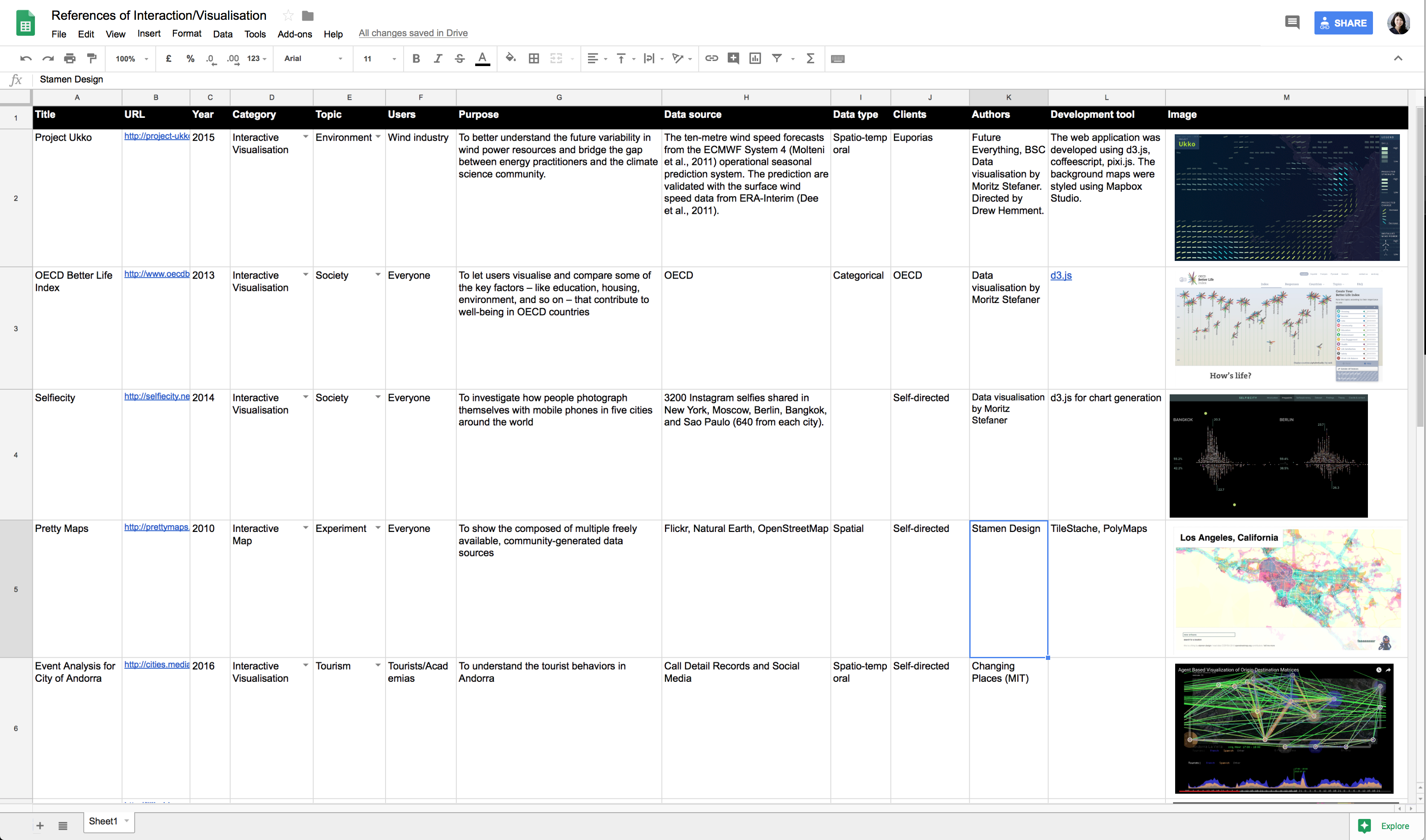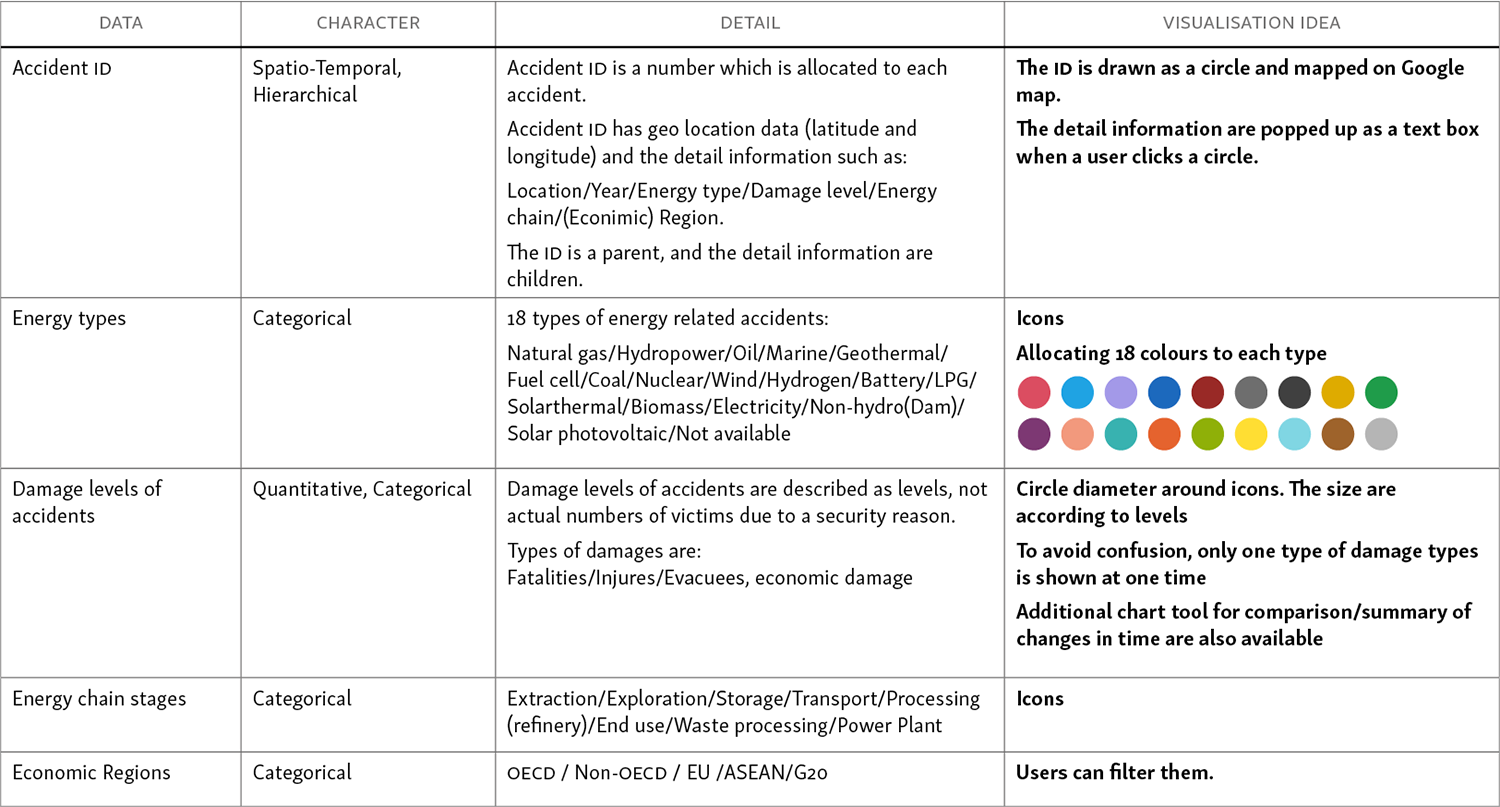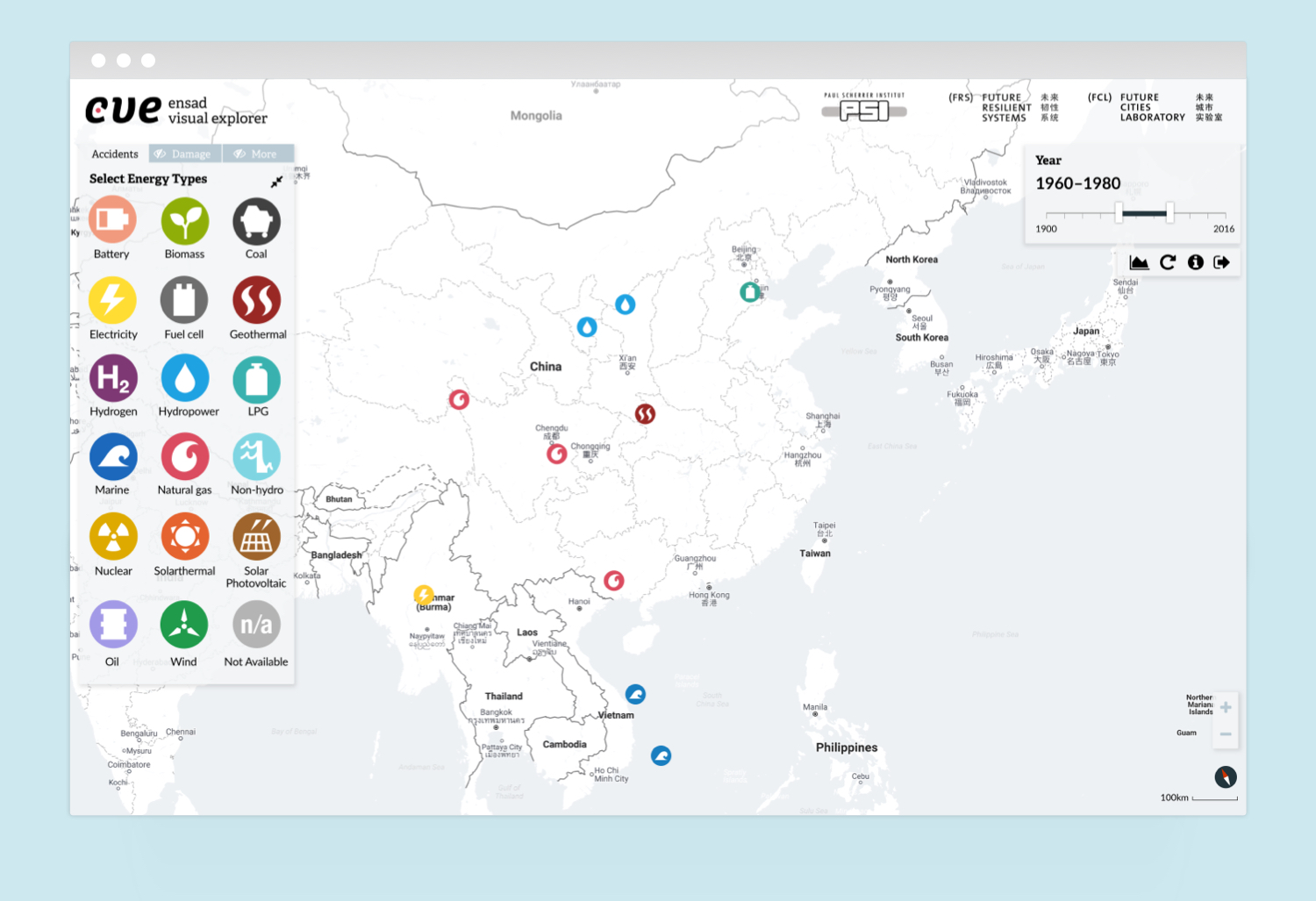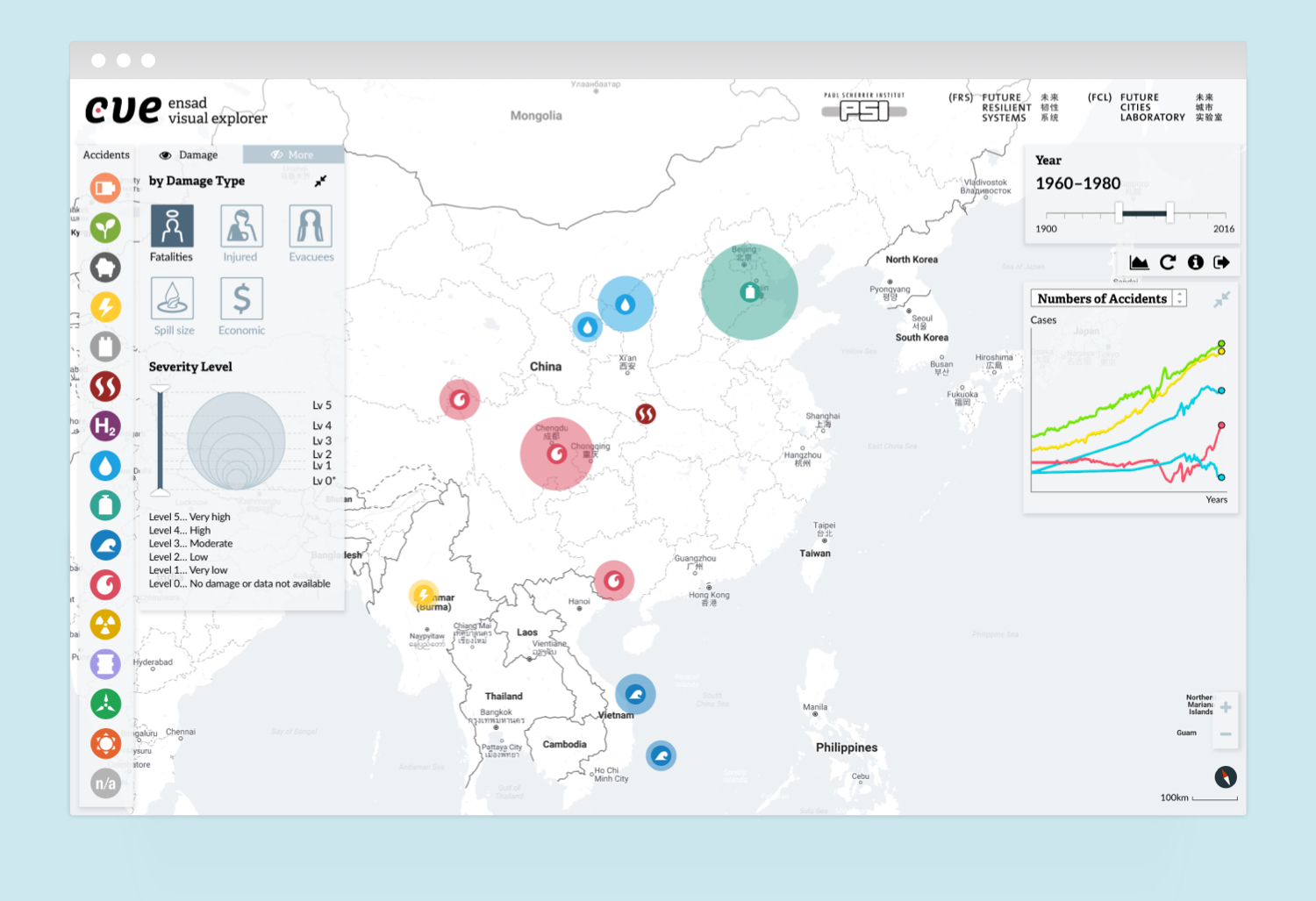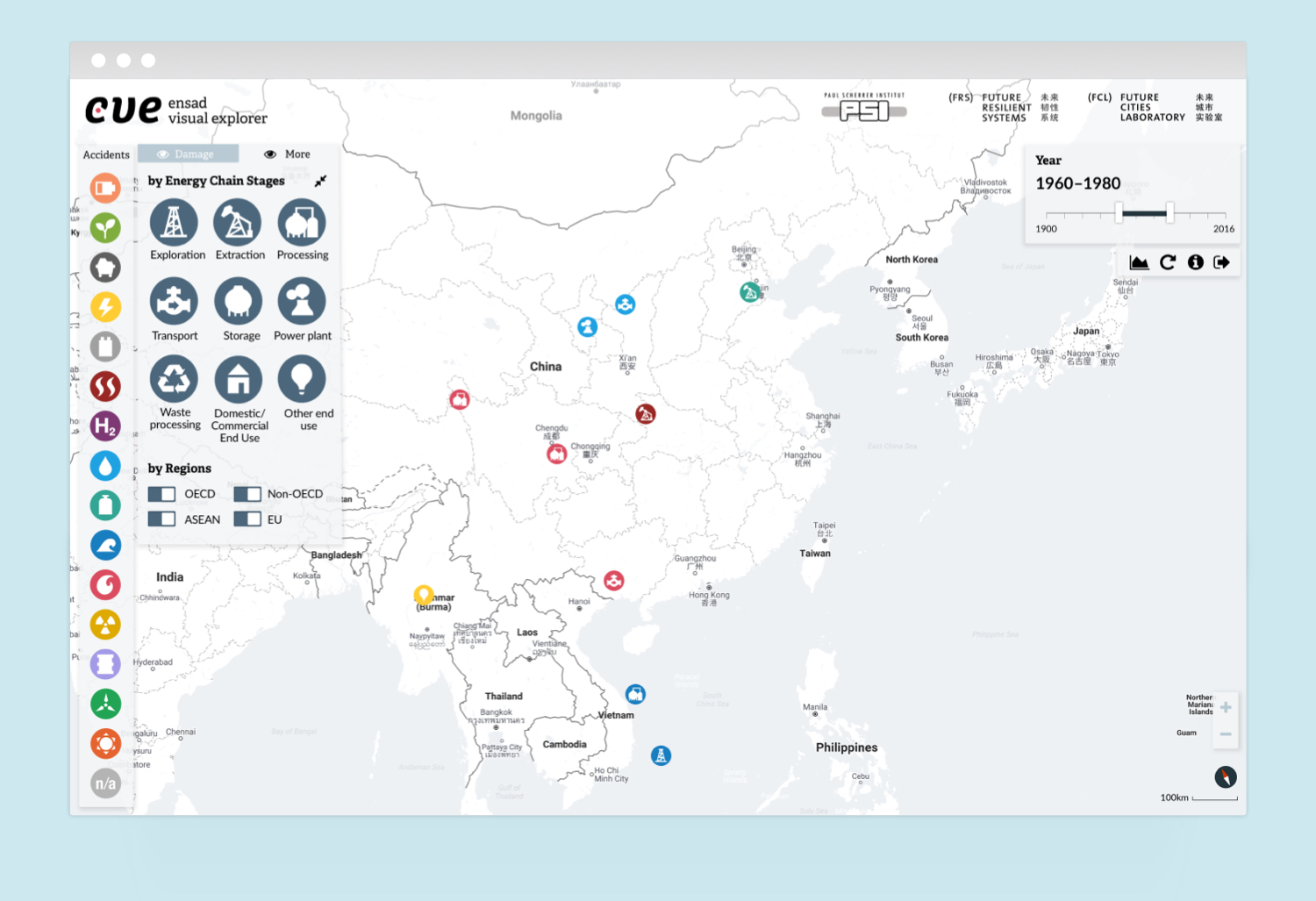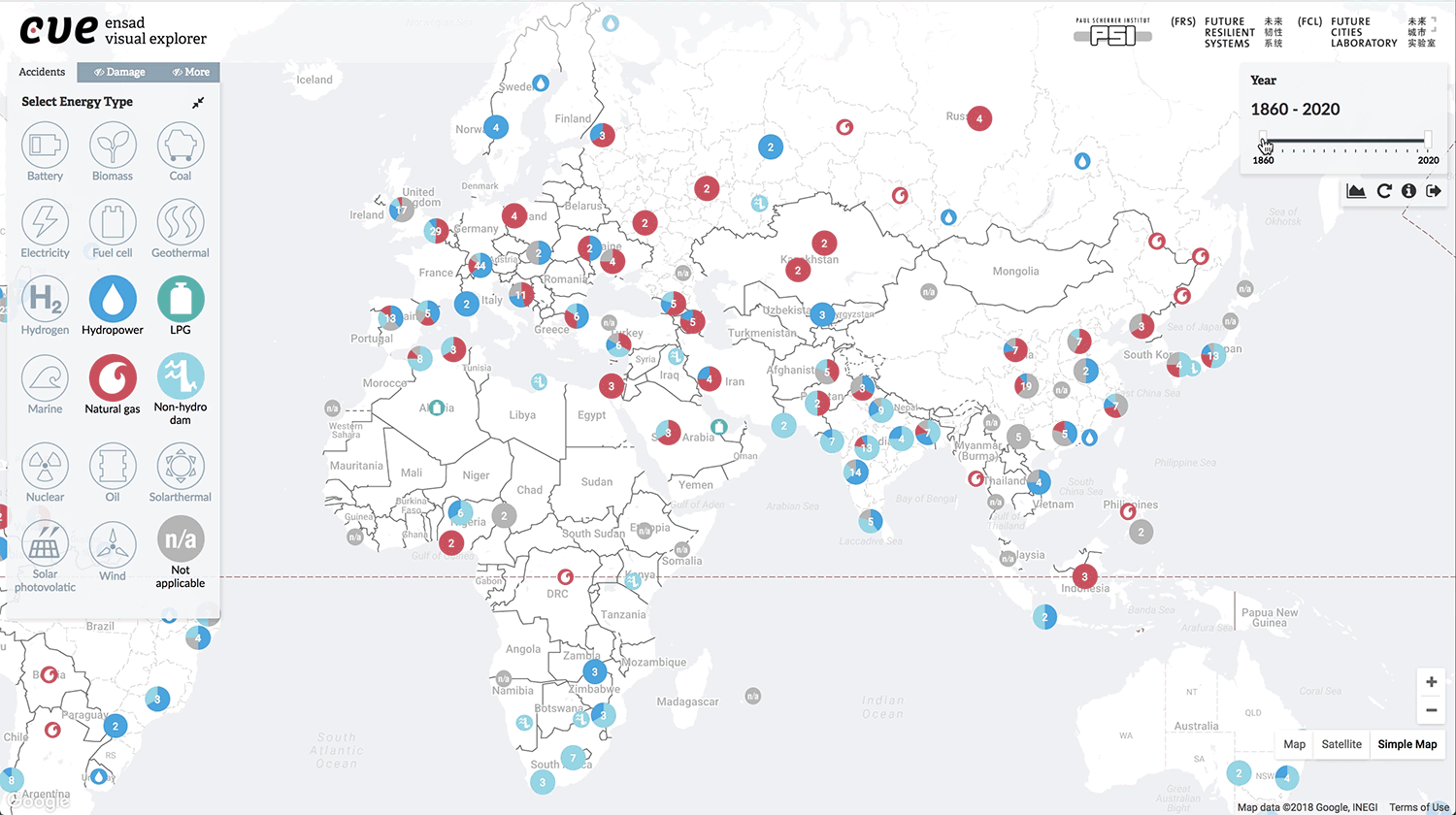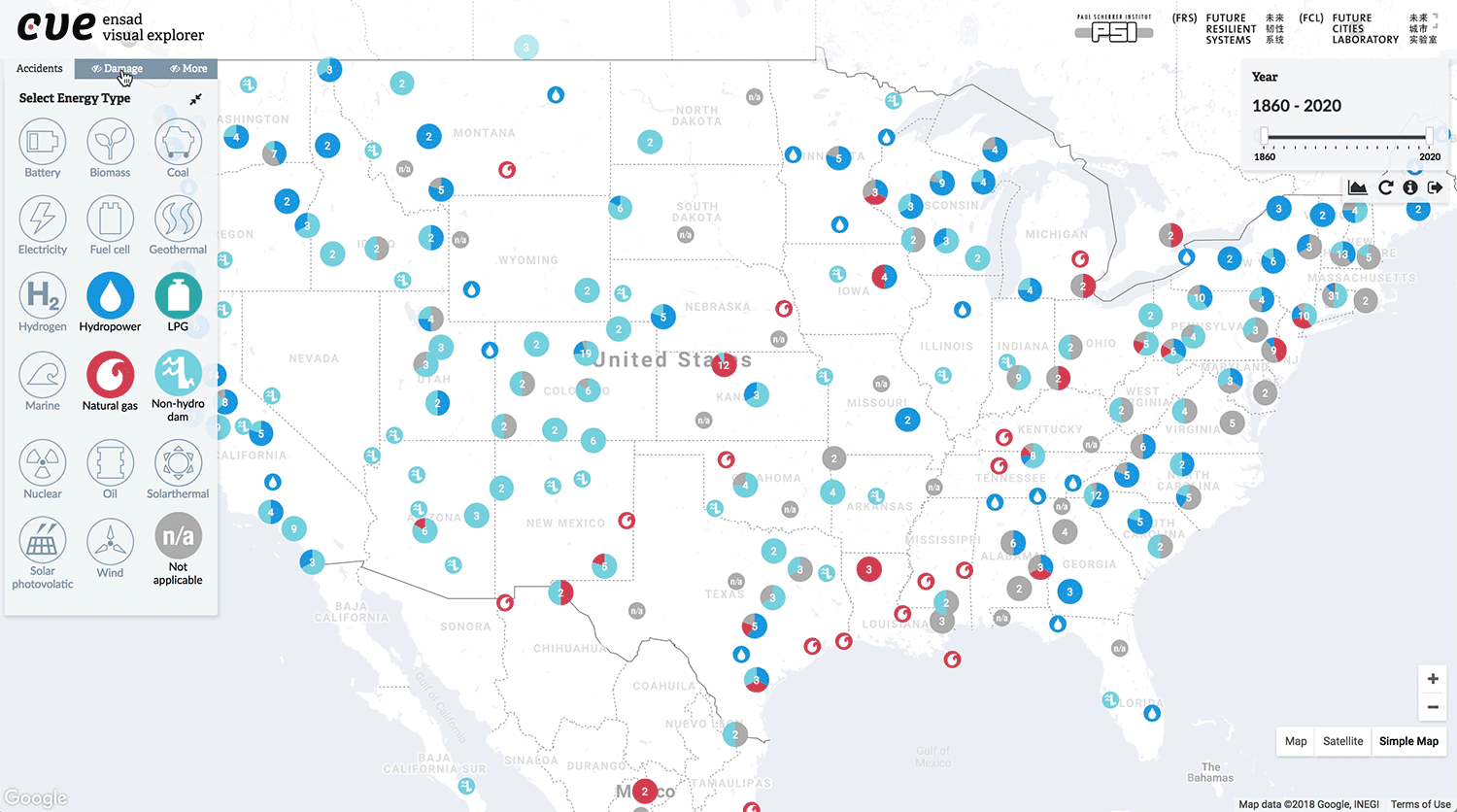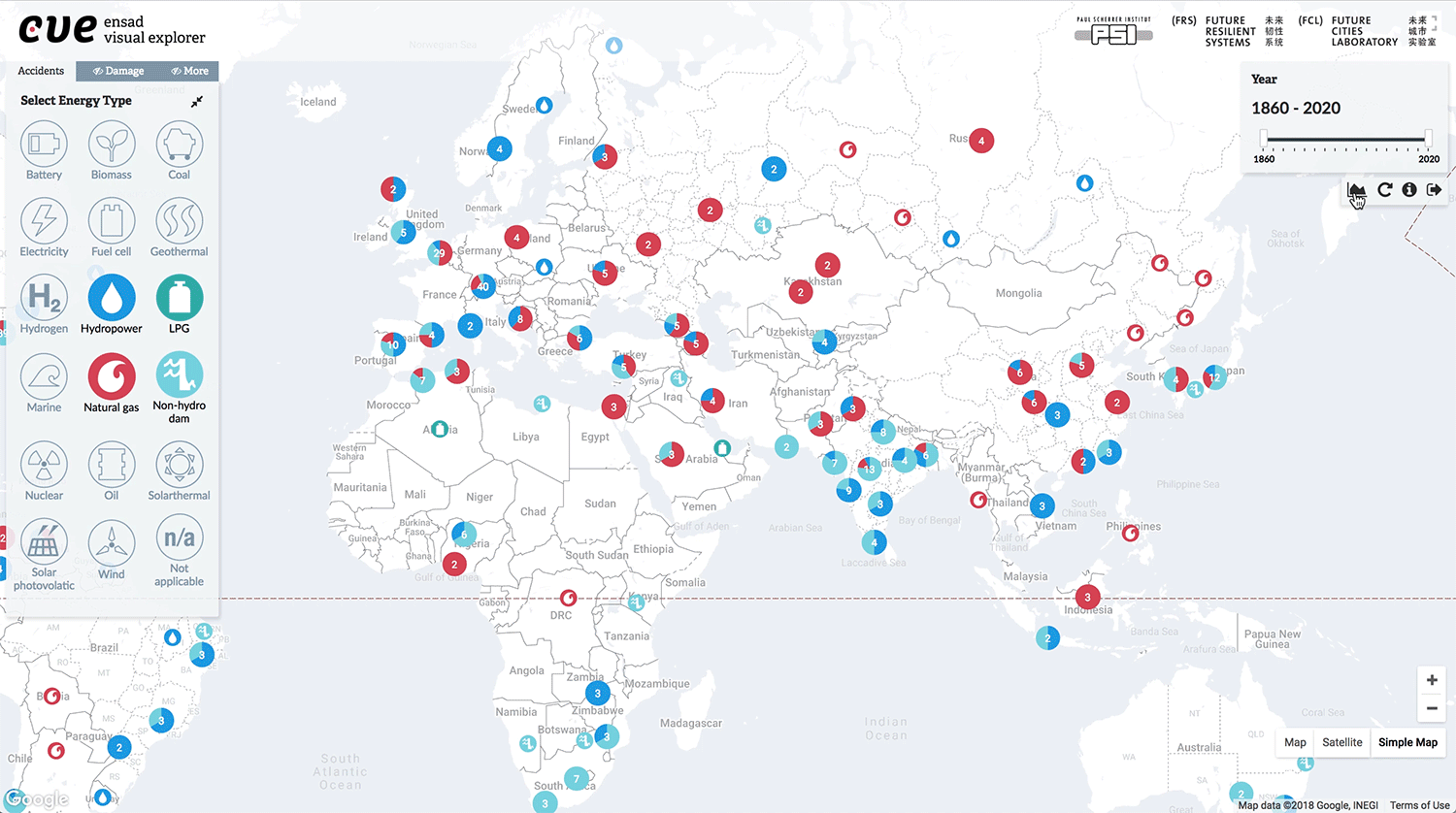data visualisation / UX / UI
2017
ENSAD Visual Explorer
ENSAD Visual Explorer (EVE) is an online app for the visual exploration of the Energy-related Severe Accident Database (ENSAD). ENSAD is a comprehensive collection of historical accidents in the energy sector over the world (e.g. floods by dams, natural gas plant explosions), covering complete energy chains.
ENSAD is available to a limited number of researchers due to its security clearance. Still, EVE can provide user-friendly access to ENSAD for the public audience, especially those who work in civil engineering or risk management.
team
Shiho Asada | Visualisation and UI Design
Sisi Salia | Frontend Developement
Kim Wansub | Data Management
data
Energy-related Severe Accident Database (ENSAD) | Future Resilient Systems / Paul Scherrer Institut
challenge
Understanding complex data
The main challenge was to visualise and analyse the geographical and spatio-temporal dataset of energy-related accidents. The dataset has multiple modalities that should be categorised. Understanding and categorising those data accurately are challenging tasks but essential to produce a clear visualisation.
Prototyping & visual design
Prototype
By categorising the data, I figured out that each of the three primary data (energy types, damage types/ levels, and energy stage chains) has 5 to 18 modalities. Showing everything in one panel could be too complicated, so I divided them into three tabs. Energy types were set as the main view.
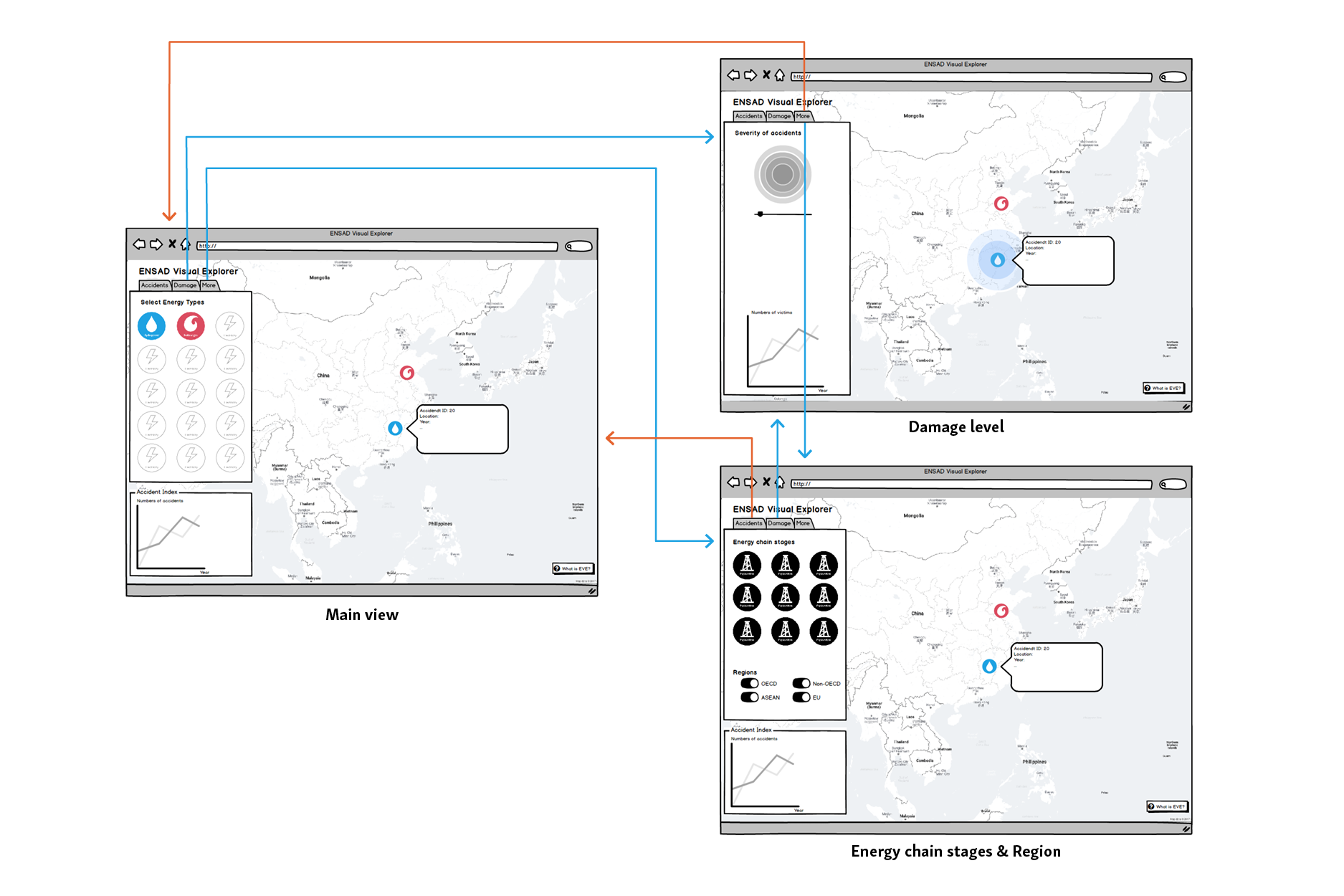
User interface
The UI includes:
- Main control panel on the left, which can filter the visualisation by Energy types, Damage types and levels, Energy chain stages and/or Economic regions
- Sub control panel on the left for filtering by year
- The optional panel under the sub-panel, which includes a chart tool
interaction
The development has so far been completed with 30% of the entire data. Here I show the interactions from recordings of the actual product.
impact
Published in Big Earth Data Journal
The design proposal was mentioned in a research paper titled Energy-related Severe Accident Database (ENSAD): cloud-based geospatial platform, which my collaborators published in Big Earth Data vol 2 in 2019. The paper mainly focuses on big data management and storage.
Looking to collaborate? Talk to me.
© 2021 Shiho Asada
